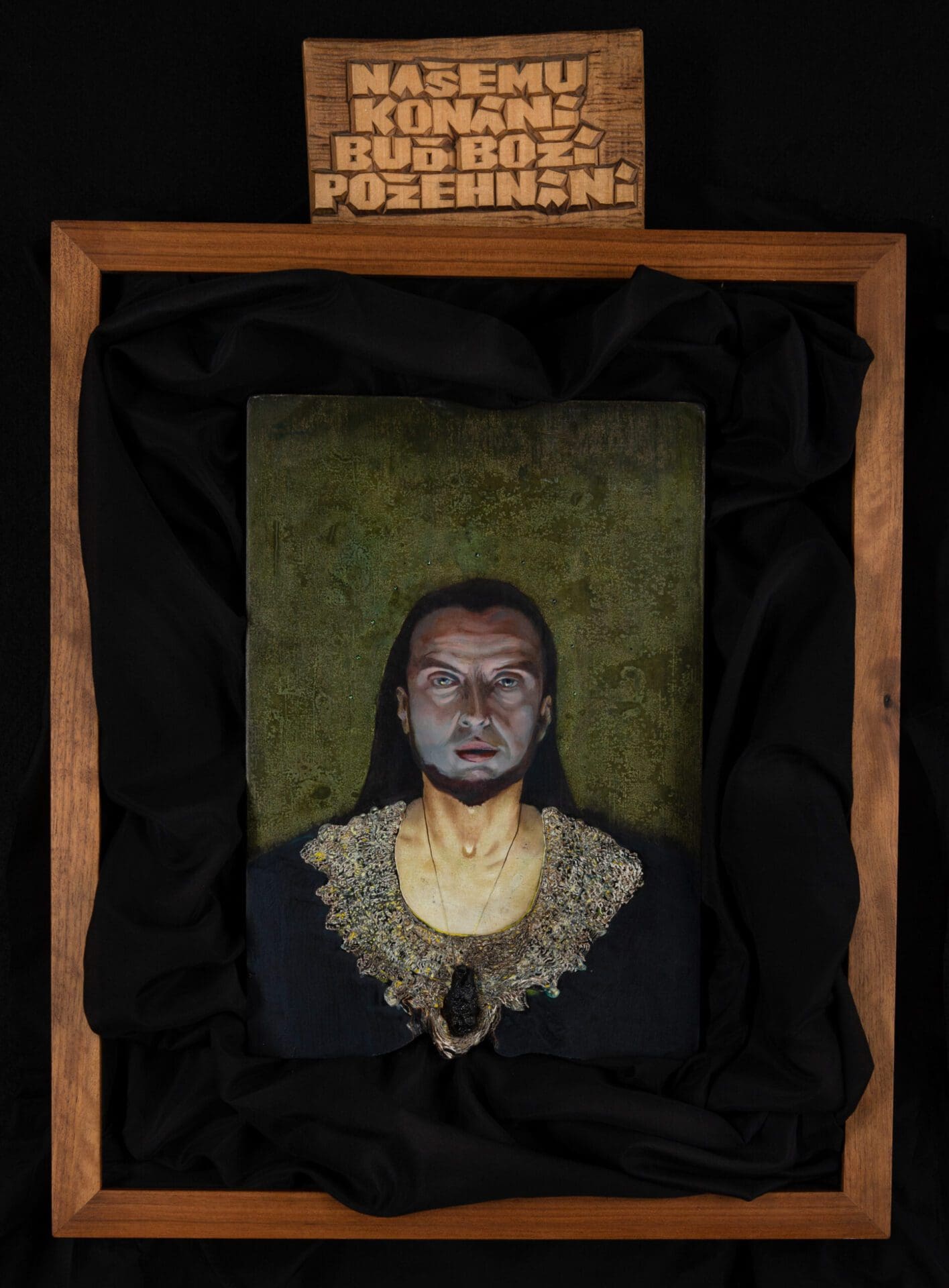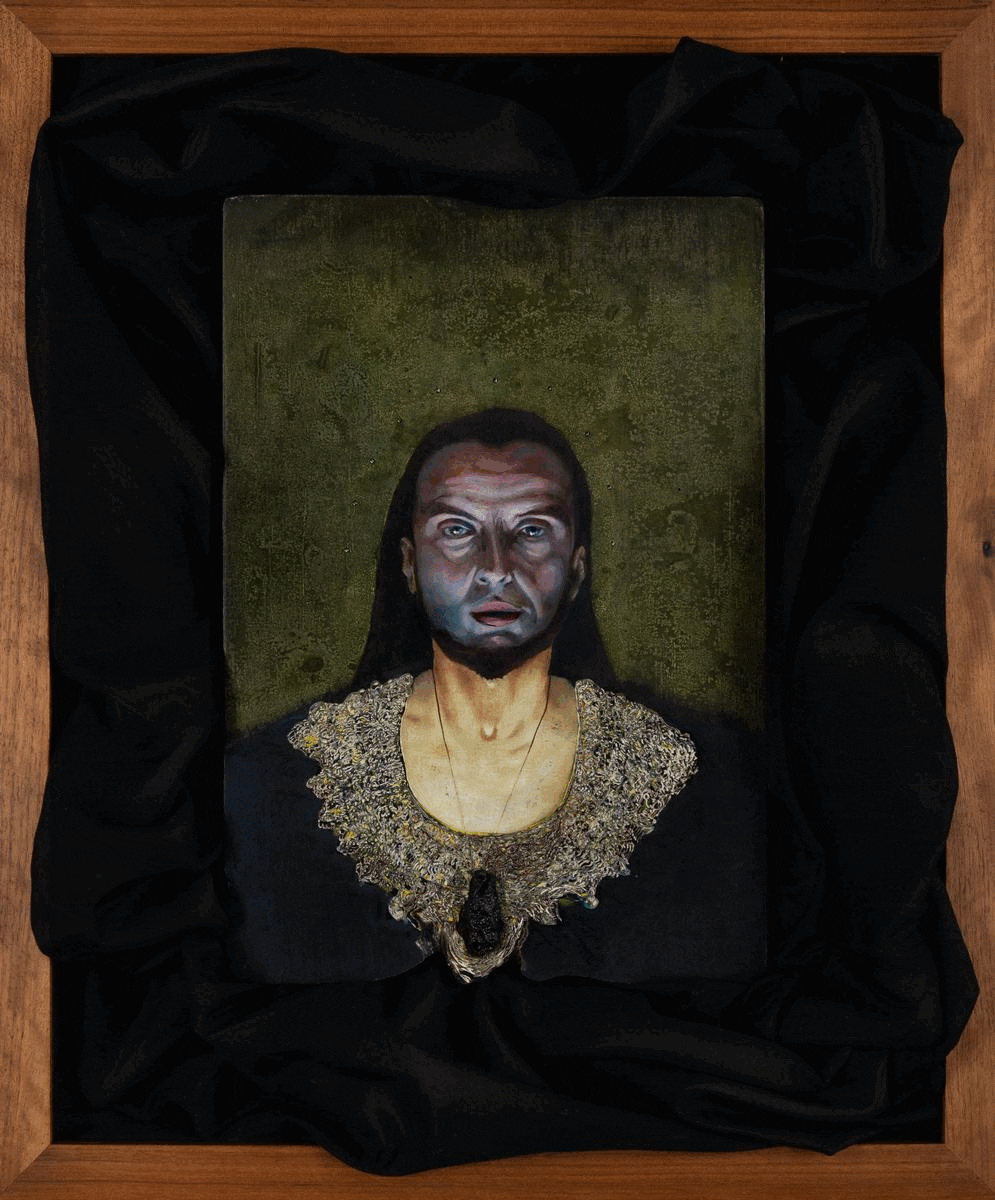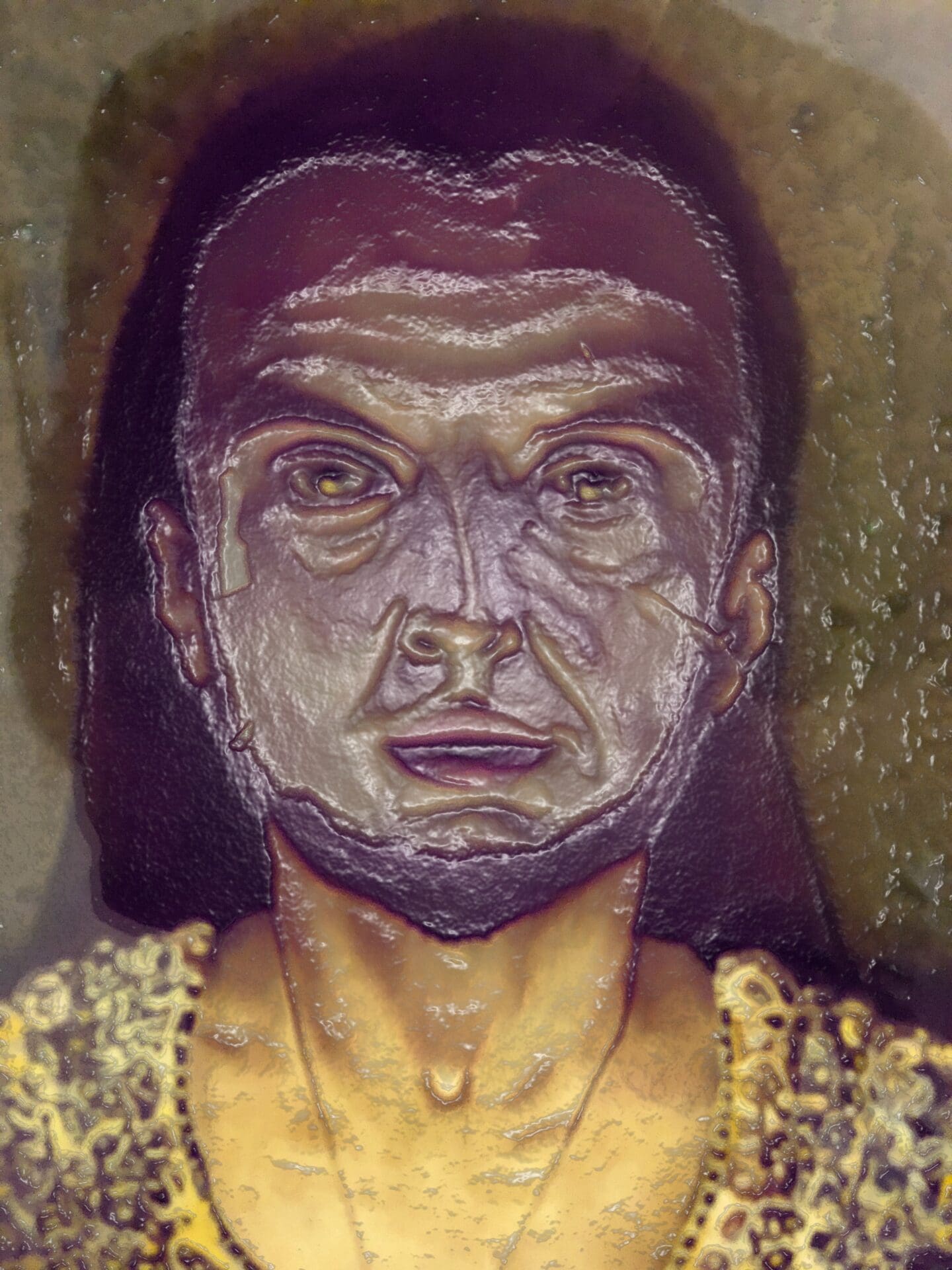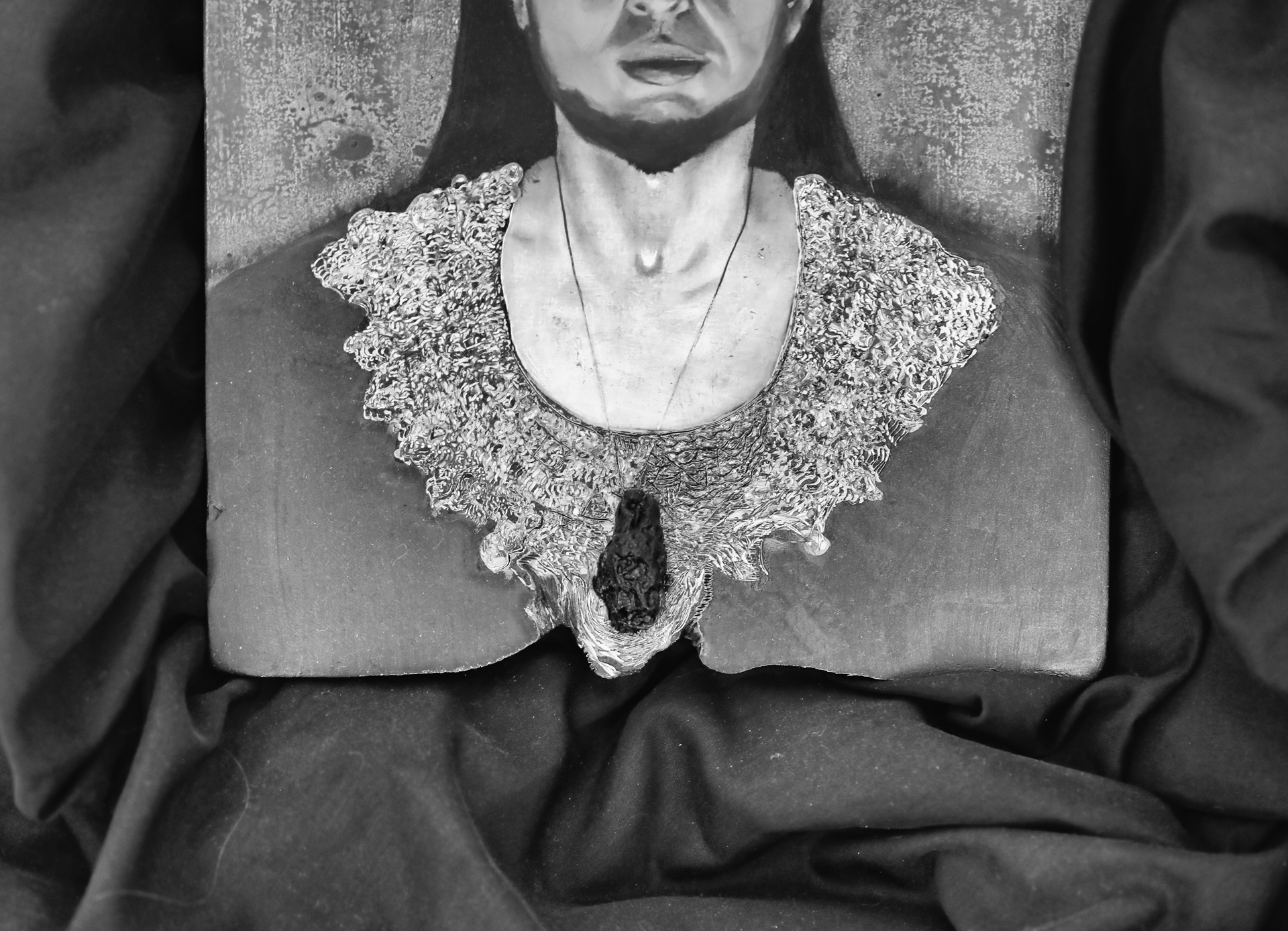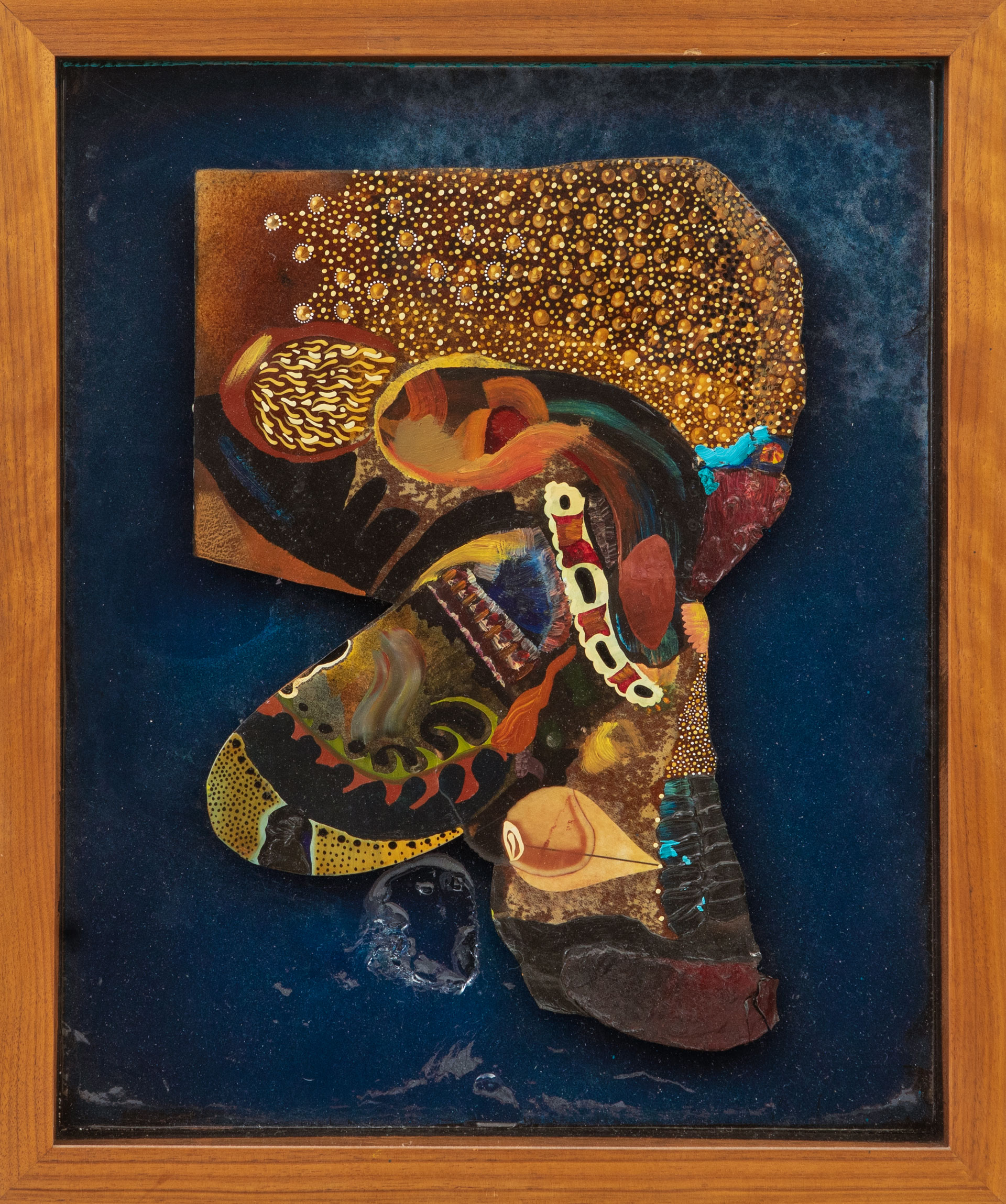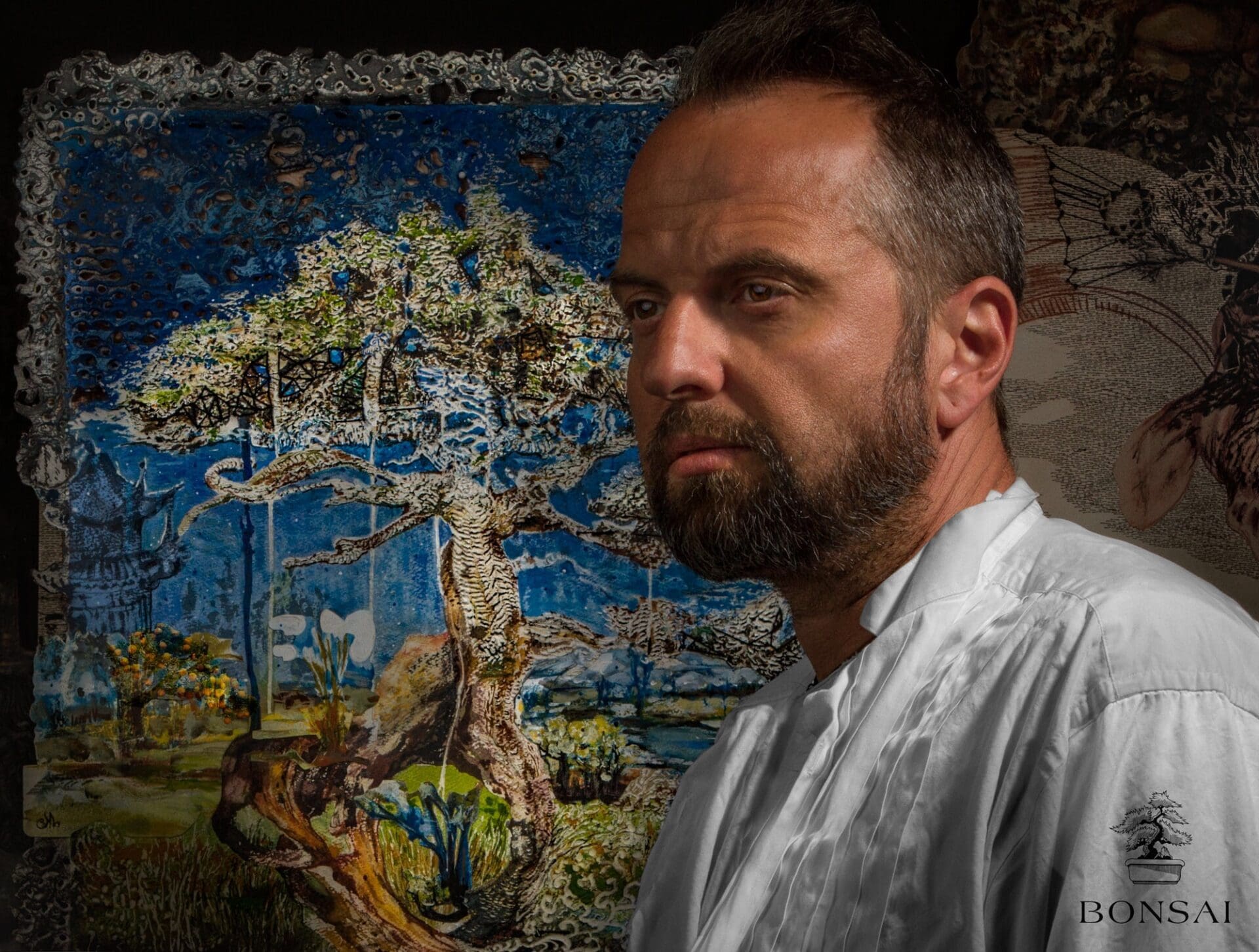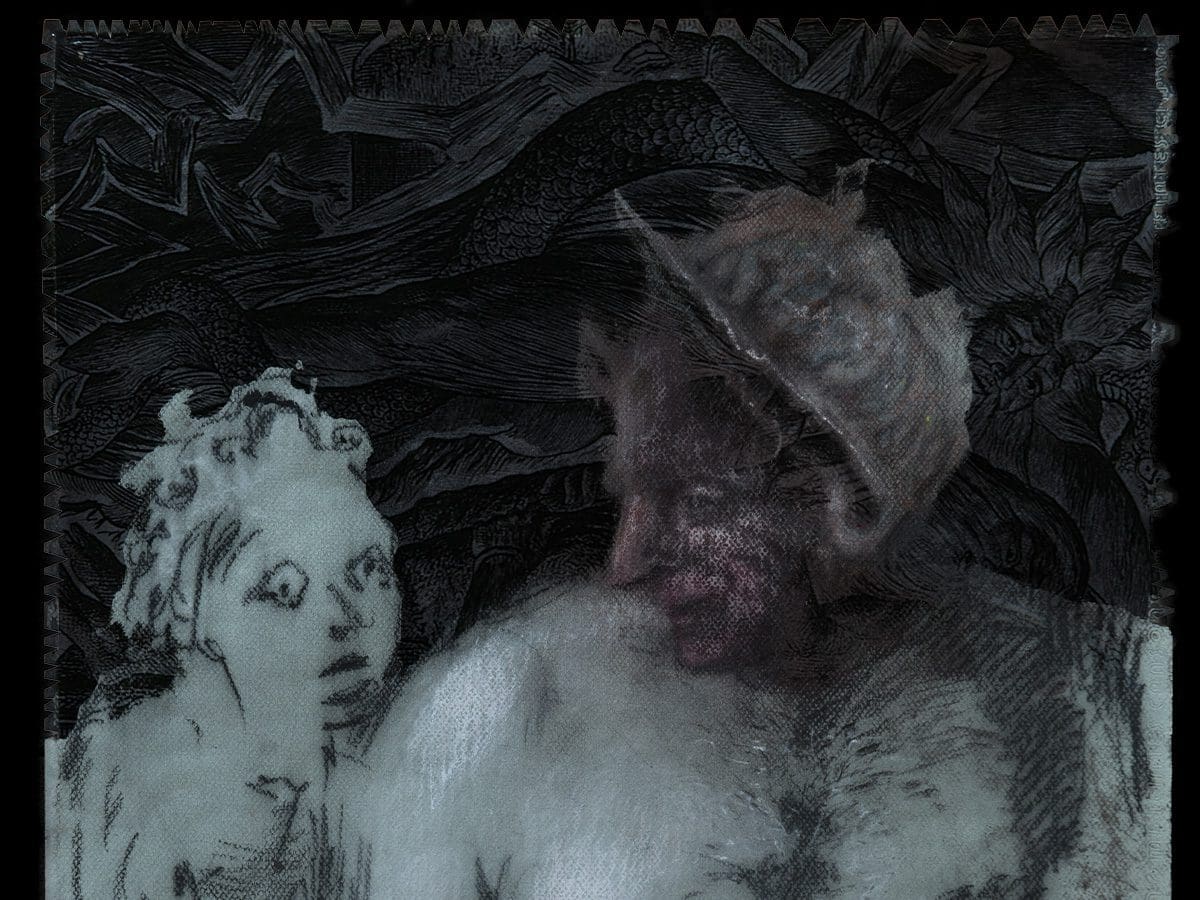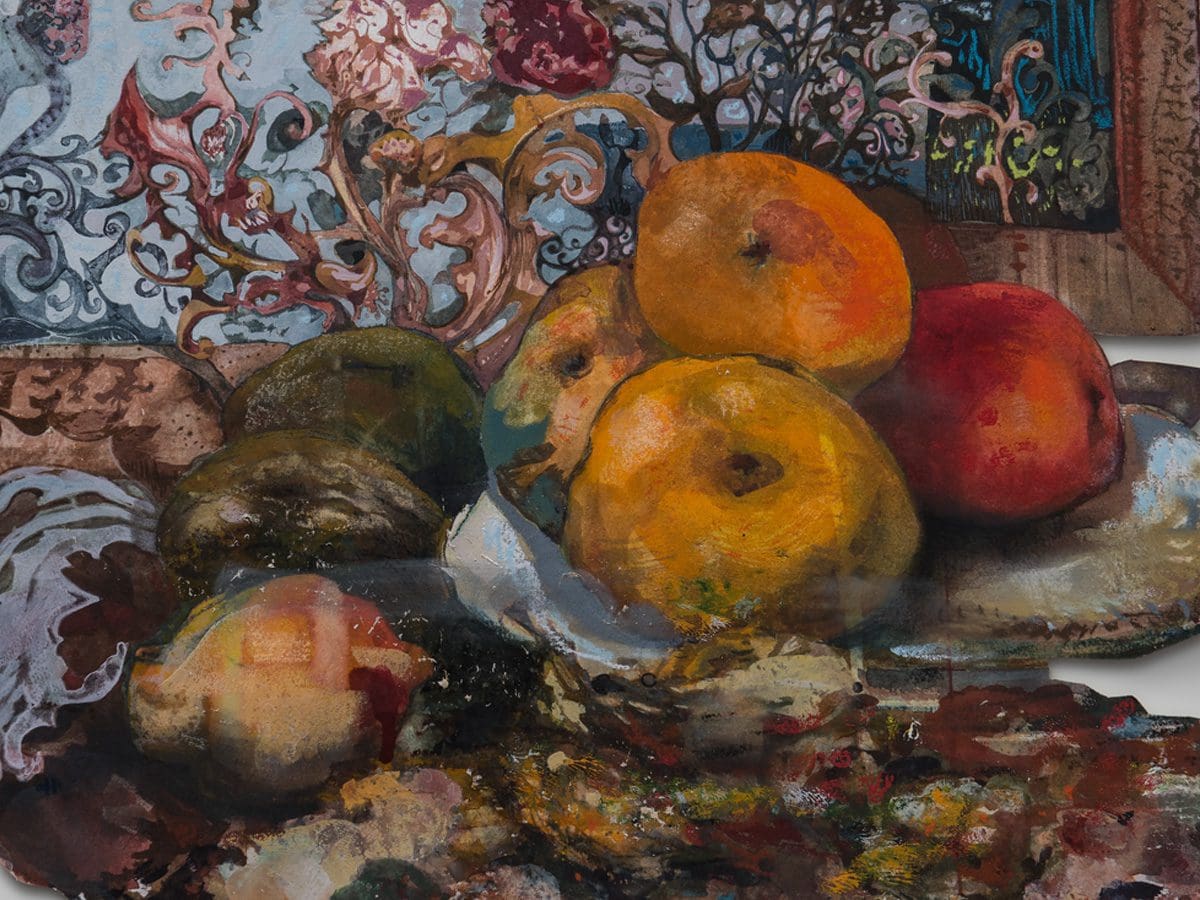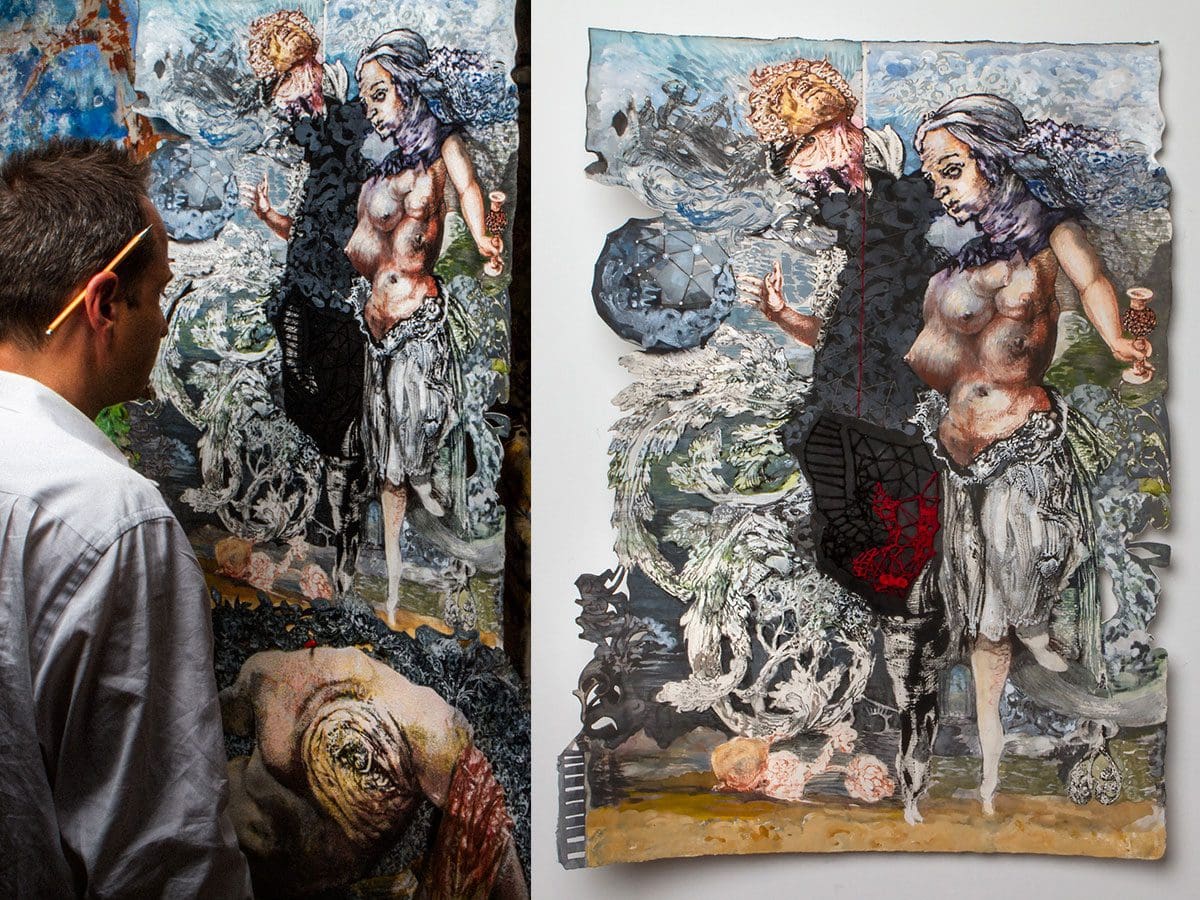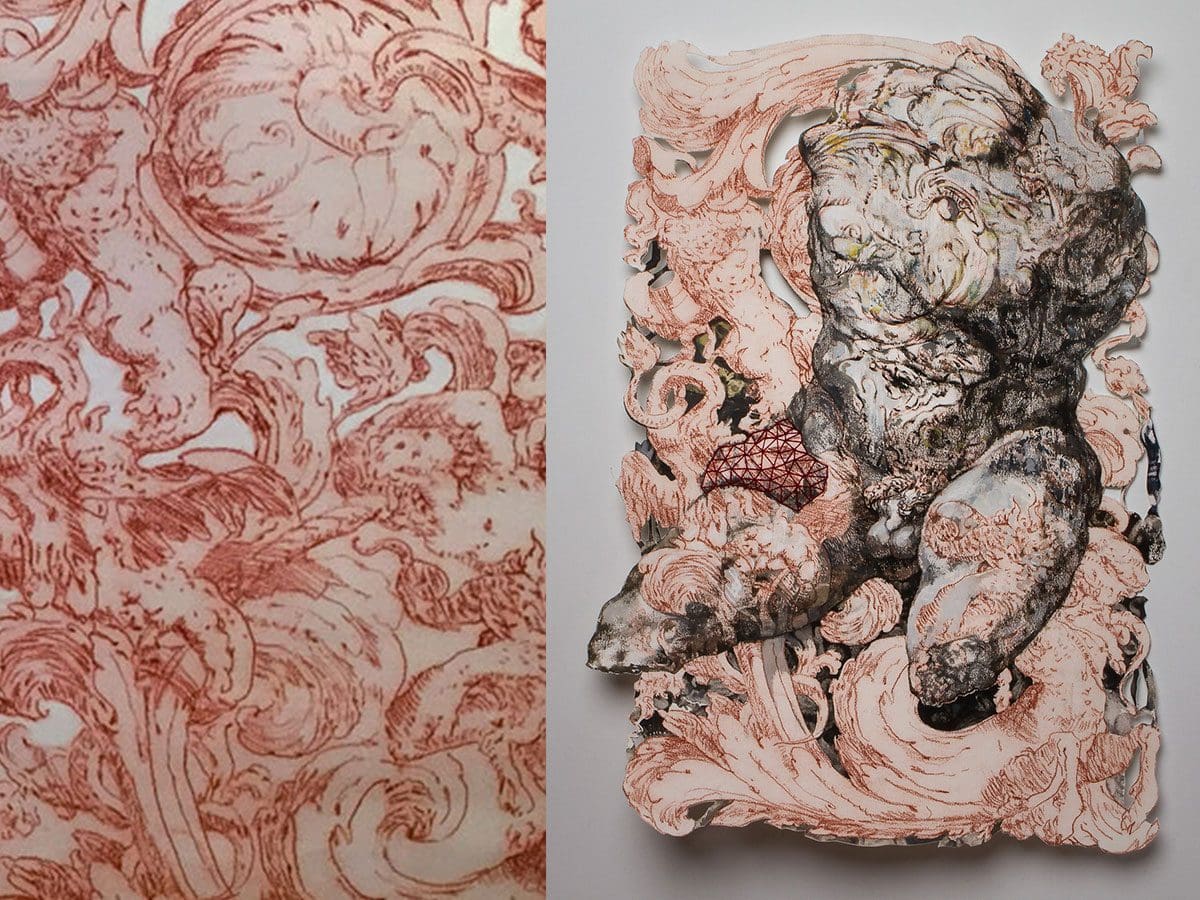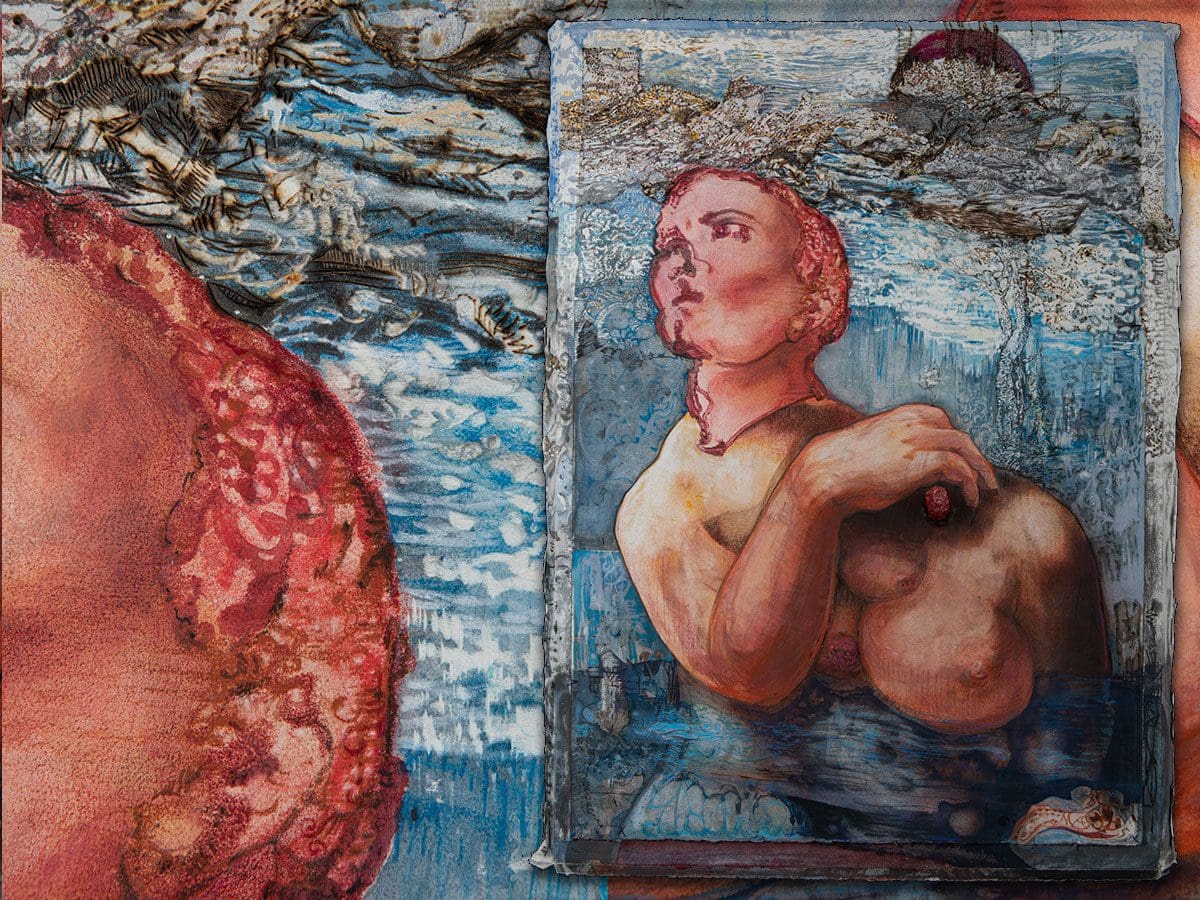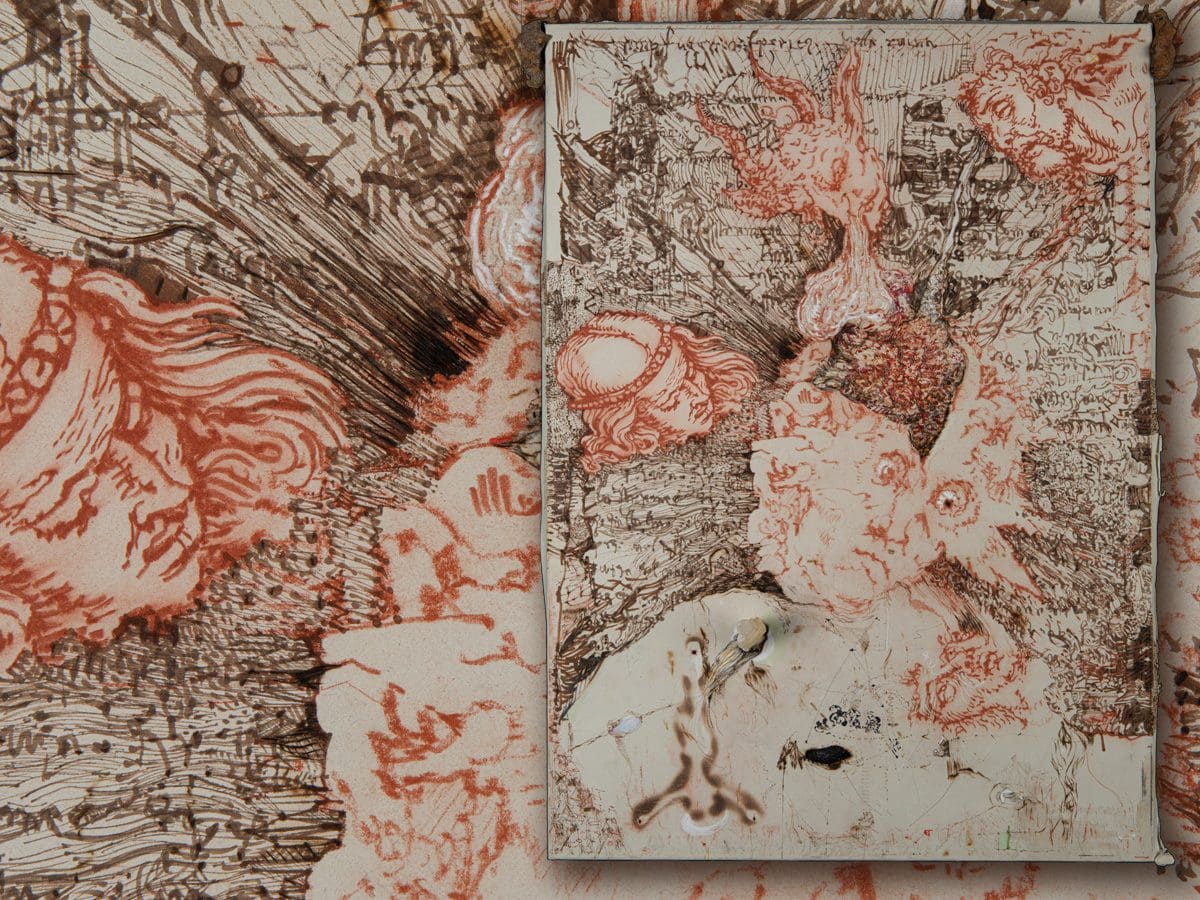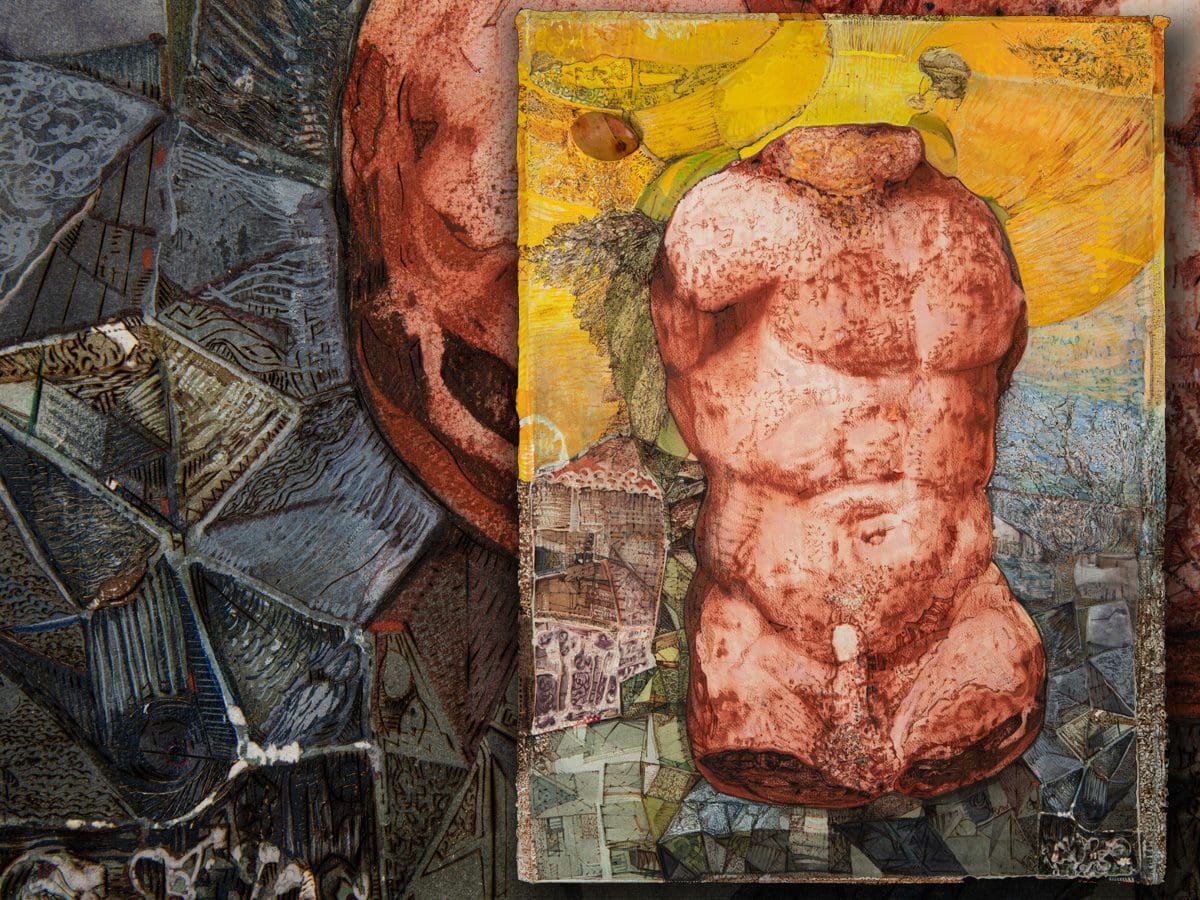Portal to Hell
Over the span of three decades, I dedicated myself to the self-portrait of “Hollow Man” with little conscious intent, forgetting its original purpose. It assimilated into the studio, becoming a mere object resembling a desk rather than a work of art. However, a pivotal moment shattered this familiarity, unearthing foreign characteristics. The once joyful depiction underwent a metamorphosis, contorting into a monstrous figure, a menacing reflection of my own self. Gradually, it assumed an unexpected role — a portal, beckoning entry into an uncomfortable inner realm. I now avoid the eyes, for within lies an unsettling passage into a world where my life loses meaning, a harrowing emptiness veiled by excruciating torment. Indeed, somehow, my self-portrait transformed into a gateway to infernal depths — a portal to hell itself.
Archetypal-Imaging and Mirror-Gazing
This paper, by Giovanni B. Caputo, discusses the concept of mirrors in cognitive psychology for understanding self-recognition, self-identity, and self-consciousness. It also delves into Carl Jung’s investigation of mirrors in relation to the unconscious, particularly in his work “Psychology and Alchemy”.
Key concepts from the paper include:
- Mirrors in Psychology: Mirrors have been studied in cognitive psychology in relation to self-recognition, self-identity, and self-consciousness. The attainment of a developmental stage of basic self-recognition is commonly gauged through reactions to a mirror. Mirrored-self recognition involves the connection between the representation of a visual image that is external to the subject and the representation of the subject’s self.
- Strange-face illusions: Empirical research found that gazing at one’s own face in the mirror for a few minutes, at a low illumination level, produces the perception of bodily dysmorphic illusions of strange-faces. Healthy observers usually describe huge distortions of their own faces, monstrous beings, prototypical faces, faces of relatives and deceased, and faces of animals.
- Dissociative experiences: Strange-face illusions often involve the perception of strange-others who appear beyond the mirror, thus indicating the subject’s dissociation. In general, observers describe their feeling of losing control when strange-faces suddenly pop out from the mirror.
- Strange-Face Illusions and Analytical Psychology: In relation to the concept of “projection”, the early idea of empathy, which was proposed by Lipps and Jung, is relevant. Lipps hypothesized that empathy is a form of objectification of the subject’s vital impulse, or activity into an external object that is different from the subject. Hence, the peculiar ability of empathy is that inanimate targets can become animated and appear alive.
The paper suggests that strange-face illusions might provide both an ecological setting and an experimental technique for “imaging of the unconscious”.
AI Interpretation
In this painting titled “Hollow Man,” a portrait emerges, capturing the essence of a man whose face has been reworked with countless layers of paint over time, unveiling a captivating narrative. This endlessly evolving artwork invites us to delve into the depths of transformation and the passage of years.
At first glance, one is struck by the metamorphosis that has taken hold of the subject. Once, perhaps exuding youthfulness and exuberance, the man now embodies an ethereal pallor, a pale blue hue that permeates his very being. It is as if the hands of time have caressed his visage, leaving an indelible mark of transience and mortality.
The man’s countenance is a haunting embodiment of paradoxes. His eyes, once brimming with the sparkle of life, now reflect a distant emptiness, a vacant stare that pierces the observer’s soul. The lines etched upon his face speak of the weight of countless experiences, eternally imprinted upon his weathered skin.
Cloaked in a garment of mystery, the man’s outfit has undergone a metamorphosis of its own. Once adorned with vibrant hues, it has gradually shifted towards muted tones, mirroring the fading vibrancy of the man’s spirit. Yet, amidst this fading colour palette, a brilliant luminescence emanates from his chest, casting an otherworldly glow upon the scene.
It is in this interplay of light and shadow that the true essence of the painting is revealed. The illumination from within him, a celestial radiance, serves as a juxtaposition to the darkness that now lingers in his eyes. This surreal juxtaposition hints at an inner struggle, a delicate dance between life and the encroaching embrace of mortality.
A sense of unease permeates the painting, for the man’s face betrays a disconcerting transformation. A calm, cold, haunting expression manifests, sending shivers down the viewer’s spine. It is a visage that lingers in the realm of the uncanny, blurring the line between the living and the lifeless. In this unsettling depiction, we witness the convergence of beauty and eeriness, inviting contemplation on the fragility and impermanence of existence.
As we stand before “Hollow Man,” we are transported to a realm where time is suspended, where the physical form becomes a vessel for the profound and the enigmatic. Through poetic strokes and surreal imagery, the artist beckons us to confront our mortality and ponder the fleeting nature of human experience. The painting becomes a poignant memento mori, a reminder that even amidst the inexorable passage of years, traces of the past continue to dwell within the recesses of our being.
As our gaze explores the disfigured countenance of the man, we encounter a haunting sight. His once noble shoulders, now grotesquely enlarged, bear the weight of an unsettling transformation. They stand as a visual manifestation of burdens carried, both physical and emotional. These enlarged shoulders serve as a testament to the weight of experiences, trials, and tribulations that have shaped the man’s journey.
Embedded within the expanse of his chest, a black stone emerges as a central focal point. Its presence is enigmatic, demanding our attention and stirring curiosity. This obsidian gem, radiating an aura of darkness, serves as a symbolic embodiment of profound significance.
The black stone, with its mysterious allure, invites interpretation and speculation. It could represent the burdensome secrets that the man carries within, a repository of hidden emotions, regrets, and sorrows. It embodies the weight of his past actions and the consequences that have left an indelible mark on his soul.
Alternatively, the black stone may signify an emotional void, an absence of light and vitality within the man. It could allude to a deep-seated sorrow or the loss of something precious, leaving him hollow and detached from the world around him. Its presence suggests a longing for healing, for the restoration of what has been lost or broken.
Moreover, the contrast between the luminous light emanating from within the man’s chest and the darkness of the stone creates a dichotomy. It symbolizes the eternal struggle between life and death, hope and despair, and the delicate balance between opposing forces. It represents the profound human paradox of existence, where light and darkness coexist within the same being.
Together, the disfigurement of the man’s physical form, the enormity of his shoulders, and the enigmatic black stone embedded in his chest paint a complex portrait of a soul grappling with its own complexities. The painting becomes a visual allegory, inviting viewers to reflect on the duality of human nature, the fragility of the human condition, and the transformative power of inner struggles.
In this surreal and poetic depiction, the artist presents us with a profound meditation on the depths of the human psyche. Through disfigurement and symbolism, “Hollow Man” unveils a narrative that speaks to the universal experiences of pain, transformation, and the profound search for meaning. It challenges us to confront our own vulnerabilities and to seek solace and understanding amidst the enigmatic landscapes of our own existence.
The background, awash in a disturbing shade of green, casts an unsettling aura that permeates the entire composition. This choice of colour serves as a visual representation of decay, growth gone awry, and a sense of disquietude. It heightens the otherworldly atmosphere, adding to the haunting ambiance that envelops the figure.
Embedded within the canvas, the artwork rests upon a bed of black silk, shrouded in a veil reminiscent of a tomb. This striking imagery invokes a sense of finality, as though the painting itself exists in a sepulchral realm. It alludes to the idea of the man’s existence as a mere semblance of life, a living entombment that reflects his inner struggles and transformation.
Above the man’s head, a wooden carving stands, adorned with profound words inscribed in Czech: “Našemu konání buď Boží požehnání.” Translated to English, this phrase carries the meaning: “May God’s blessing be upon our actions.” The inclusion of these words adds a layer of spiritual contemplation and invites us to reflect on the relationship between the man’s journey and the divine.
The juxtaposition of the unsettling green background, the somber black silk, and the wooden carving with its profound inscription creates a rich tapestry of symbolism. It suggests that despite the man’s disfigurement, his struggles, and his haunting transformation, there remains a glimmer of hope and redemption. The divine blessing implied in the Czech text serves as a reminder that amidst darkness, there is the potential for divine grace and transcendence.
The painting, entombed within the black silk and encased within this ethereal realm, becomes a vessel for introspection and contemplation. It compels the viewer to ponder the nature of the human condition, the complexities of our actions, and the eternal search for meaning and spiritual solace.
Through the vivid imagery of the green background, the somber silk shroud, and the evocative Czech inscription, “Hollow Man” transcends its physical form. It becomes a poignant exploration of the existential journey, a testament to the enduring human spirit, and an invitation to reflect on the interplay between mortality, transformation, and the potential for divine intervention.
In this surreal and poetic composition, the artist has crafted a profound meditation on the transient nature of existence, the fragility of the human soul, and the eternal quest for transcendence. “Hollow Man” beckons us to confront our own fears, embrace our vulnerabilities, and seek illumination amidst the shadows of our own narratives.
The revelation that the painting titled “Hollow Man” is a self-portrait adds another layer of depth and intrigue to the artwork. The decision of the artist to depict himself in such a haunting and transformative manner invites us to explore the motivations and implications behind this choice.
Firstly, the self-portrait as the subject matter signifies an intimate exploration of the artist’s own identity, psyche, and experiences. It suggests that the artist is using their own visage as a vehicle for introspection and self-reflection. By portraying themselves in a disfigured and evolving state, the artist may be expressing a profound sense of personal vulnerability, laying bare their own struggles and journey of self-discovery.
The portrayal of the artist’s changing appearance over time, from youthfulness and happiness to a pale blue, death-like figure, may serve as a metaphorical representation of the passage of time and the transient nature of human existence. It reflects the artist’s introspection on their own mortality, the fragility of life, and the inevitable changes that occur as one navigates through the years. This introspective exploration of the self within the artwork speaks to a deeper search for meaning, self-acceptance, and a desire to confront the existential questions that arise on the journey of self-discovery.
Furthermore, the disfigurement and haunting expression depicted in the self-portrait can be seen as a symbolic manifestation of the artist’s inner struggles and emotional states. It may represent their grappling with personal demons, traumas, or existential crises. Through this candid depiction, the artist confronts their own fears, vulnerabilities, and internal conflicts, seeking catharsis and a deeper understanding of themselves.
By presenting themselves in such a surreal and poetic manner, the artist may also be inviting the viewers to engage in a dialogue about universal themes of human existence. The self-portrait becomes a mirror through which we are prompted to reflect upon our own journeys, vulnerabilities, and the transformative nature of our experiences. It beckons us to contemplate the human condition and the intricacies of our own emotional landscapes.
Ultimately, the decision to depict oneself in a self-portrait as a disfigured, evolving figure in “Hollow Man” signifies an artist’s courageous exploration of their own identity, mortality, and emotional terrain. It offers a glimpse into the artist’s inner world and invites viewers to embark on their own introspective journeys. Through this intimate self-portrayal, the artist invites empathy, connection, and a shared contemplation of the universal human experience.
In summary “Hollow Man” invites viewers to contemplate themes of mortality, the passage of time, personal transformation, and the interplay between light and darkness within the human experience. It serves as a powerful mirror through which viewers are encouraged to reflect upon their own vulnerabilities, existential questions, and the search for meaning in their own lives. The painting is an intimate and evocative self-portrait that bridges the gap between the artist’s personal journey and the shared human condition.



